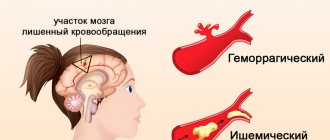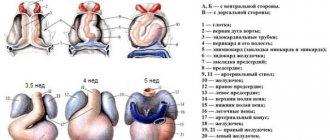It happens that some people cannot hear their heartbeat and this fact scares them. Correct contraction of the heart does not cause discomfort. It occurs smoothly and constantly, so in a state of complete rest it should not be heard. If a person feels unwell or the heartbeat increases greatly, then these signs may indicate diseases of the cardiovascular system.
Emotions affect the body. And the body - on emotions?
We are accustomed to thinking that our emotional state determines the rhythm of our heartbeat, because when we are afraid, our heart begins to beat faster. In fact, this is a two-way process: our feelings can change under the influence of signals coming from the body.
William James, who is often called the father of American psychology, wrote about the relationship between the body and emotions in his works. At the end of the 19th century, he hypothesized that emotions are just another name for bodily sensations.
For example, when our heart is pounding, this physical sensation causes a state that we call fear. In other words, it is the increased heart rate that makes us feel fear, not the other way around.
This seems reasonable. It is difficult to imagine anger that is not accompanied by characteristic external manifestations: flushing of the face, clenched teeth, flared nostrils and a rapid heartbeat. Or grief without tears, sighs and chest pain. As James said, “emotions do not exist outside the body.”
Thanks to neuroimaging, we now know that the insula also plays an important role in emotion. This fact confirms James' theory about the relationship between the body and emotions. Psychologist Lisa Feldman Barrett of Northeastern University also found evidence that emotions are determined by bodily sensations, past experiences and upbringing.
Moreover, heart palpitations can increase feelings of fear. In one 2014 experiment, Garfinkel showed subjects photographs of people with scared, happy, outraged, and neutral facial expressions. People who saw fearful faces and focused on the heartbeat at that moment reported that they experienced more intense fear.
Fetal heart rate table by week
The fetal heartbeat during pregnancy is checked for every woman registered. This indicator allows you to:
- confirm the fact of pregnancy. After the first delay, the woman is sent for diagnostics. According to ultrasound, from the 3rd week you can hear the heartbeat. If fetal cardiac activity is not observed, an ultrasound scan is performed again after some time. The absence of a heartbeat indicates a frozen pregnancy;
- assess the condition of the fetus. The child's heart is sensitive to changes. Stress, maternal illness, the amount of oxygen in the surrounding space, sleep and rest phases are immediately reflected in the heart rate. If the heart beats too fast for a long time, the blood supply to the fetus is disrupted. If it is slow, this indicates a deterioration in the baby’s condition. Correction methods largely depend on the period at which the heartbeat became pathological;
- monitoring the condition of the fetus during labor. During the birth process, the baby experiences severe stress and lack of oxygen. Heart rate monitoring allows you to identify difficulties such as umbilical cord compression, placental abruption, and take emergency steps to eliminate the consequences. During labor, the baby's heart rate is checked after each contraction.
There is a belief that the sex of the child can be determined by the fetal heart rate. Allegedly, girls have a heartbeat of 150-170 beats per minute, and boys - 130-150. Therefore, many people think that if, according to an ultrasound, the fetal heart is 146 beats per minute, or, for example, 137, 143, then a boy will be born. And who will be at 167 blows, or 158, 172 - a boy.
This hypothesis is not scientifically confirmed in any way. Gender can only be determined by heart rate with 50% confidence. Heart rate in boys and girls reflects the ability to fight the lack of oxygen. And gender has no influence on this ability.
If you want to find out the sex of your unborn child, contact an ultrasound specialist. Gender can be determined from 15-16 weeks.
The heart rate changes not only according to the baby’s activity phases, but also depending on the stage of pregnancy.
- at week 7 the norm is 115 contractions;
- on the 8th, the heartbeat can jump to 170 beats per minute;
- at 11 weeks, the heart rate usually remains at 150 beats. Minor deviations up or down are acceptable.
Starting from the thirteenth week, doctors constantly check the heart rate using ultrasound, checking the character and rhythm, location of the heart.
From the second trimester, the contraction frequency stabilizes and is 140-160 beats. If the pulse is fast, for example, 170-180, this indicates oxygen starvation. If it is low, less than 120, this indicates fetal hypoxia.
Observation by a doctor
Monitoring the heartbeat is mandatory during childbirth, especially in the presence of any pathologies. The normal heart rate is 140 beats. But sometimes it can reach up to 155.
Baby's heart rate:
Thus, the number of 125 beats is the norm for the initial stages of pregnancy. At later stages, it is considered weak and requires additional examination.
A pulse of 153, 162, 166 beats per minute is natural for periods of 11-40 weeks, for 4-7 weeks it is pathological.
You can find out the sex of the fetus
When determining the heart rate, the doctor evaluates not only the fetal heartbeat, but takes into account additional factors: the presence of a disease in the mother, listening time, whether the baby is sleeping or is in an active state.
When the expectant mother wants to listen to the baby’s heart beat, it is not necessary to visit the clinic. The sound of embryonic development can be heard in the following ways:
- stethoscope. A regular obstetric tube is inexpensive and allows you to listen to the baby’s heart. A patient assistant will be required. It is important to learn to distinguish the heart from the sounds of the baby’s movements, pulse, and mother’s peristalsis. Effective from 18-25 weeks;
- fetal doppler. Suitable for those who do not have time to master a stethoscope. A portable ultrasound detector works on the CTG principle, but does not provide a graphic image. The kit usually includes headphones. This device is effective from 8-12 weeks, and you can use it until the 38-39th;
- putting your ear to your stomach. The method is suitable for late pregnancy, in the 3rd trimester. The place of application depends on the location of the fetus. If your baby is lying head down, place your ear below the navel. With breech presentation – higher. Usually this method is used by men to hear the life emerging in the womb.
The better you hear the heart, the stronger the emotions
It is noteworthy that not all of us are equally good at listening to our inner feelings. Scientists studying interoception often use focus on the heartbeat to assess this ability.
They found that the more interoceptive a person is, the stronger their emotions.
This fact has been repeatedly confirmed by studies in which people were shown various emotional materials, such as films. Those who could feel their heartbeat more clearly reported greater viewing experiences.
When does fetal heartbeat occur?
The process of heart formation begins in the fourth week of pregnancy and is a rather complex process. In the early stages, its rudiment looks like a hollow tube, and only by the eighth week does it become similar to a human heart. In the fifth week it begins to contract, but the beating cannot yet be heard without special equipment. Listening during this period is only possible during an ultrasound examination using a transvaginal sensor. By the seventh week, you can hear the fetal heartbeat when performing an ultrasound with a transabdominal probe (through the abdominal wall). And only from the 20th week the fetal heartbeat is listened to with a stethoscope.
Attention to body sensations is associated with anxiety
The increase in fear that Garfinkel observed in her experiment may be even greater in anxious people. Garfinkel's goal is to discover the relationship between interoceptive ability and mental disorder, and then use interoception as a tool to treat it.
According to Garfinkel, we still know very little about interoception.
Anxious people are sometimes overly focused on how their body feels. But it may be difficult for them to know whether they are paying increased attention to the heartbeat because they are anxious, or whether they are anxious because they are paying increased attention to the heartbeat.
Anxious people often believe that they have better interoceptive abilities. But it is not always the case. Garfinkel found that a discrepancy, either one way or the other, between one's perceived and actual ability to feel one's heartbeat can be a sure sign of anxiety. Garfinkel also found low interoceptive ability in people with autism.
“The connection between interoception and mental disorders has not received enough attention in modern science,” says Sahib Khalsa of the Oklahoma Brain Institute. But the situation is gradually changing, says Khalsa.
It is becoming increasingly clear that interoceptive deficits are observed in a wide range of disorders: depression, panic and somatoform disorders, eating disorders, substance use disorders and post-traumatic stress disorder.
Norm
The human hearing aid is very sensitive and picks up the most subtle sounds. This property helps doctors determine by the pitch of the sound how serious the disturbances in the heart are. Sounds during auscultation of the heart arise due to the work of the myocardium, valve movements, and blood flow. Heart sounds normally sound sequential and rhythmic.
Places for listening to heart sounds
There are four main heart sounds:
- occurs when a muscle contracts. It is created by vibration of the tense myocardium, noise from the operation of the valves. It is heard in the area of the apex of the heart, near the 4th left intercostal space, and occurs synchronously with the pulsation of the carotid artery.
- occurs almost immediately after the first one . It is created due to the slamming of valve flaps. It is more deaf than the first and can be heard on both sides in the second hypochondrium. The pause after the second sound is longer and coincides with diastole.
- optional tone; normally its absence is allowed . It is created by vibration of the walls of the ventricles at the moment when there is additional blood flow. To determine this tone you need sufficient listening experience and absolute silence. It can be heard well in children and adults with a thin chest wall. It is more difficult for obese people to hear it.
- another optional heart sound, the absence of which is not considered a violation. Occurs when the ventricles fill with blood during atrial systole. Perfectly heard in people of thin build and children.
Low attention to body sensations is associated with dissatisfaction with it
University of London neuroscientist Manos Tsakiris has found a link between low interoceptive ability and dissatisfaction with one's appearance, even with a normal body mass index.
People who have difficulty feeling their heartbeat also have an increased tendency to objectify their body. “In other words, they tend to think about their bodies not in terms of health, but in terms of attractiveness,” he says.
Tsakiris plans to conduct an experiment to measure interoceptive ability and body satisfaction among girls before and after they reach puberty to see how these indicators change. He suggests that girls with better interoceptive ability go through the maturation process more smoothly and do not have problems with body image later in life.
Concept of tachycardia
Increased heart rate often occurs for a number of unpleasant reasons, such as severe stress, physical activity and many others. When the pulse begins to exceed 90 beats, the heart muscle begins to work in emergency mode, and therefore quickly wears out. All this leads to the development of diseases of the cardiovascular system. Such overvoltage is very dangerous because it leads to serious problems, especially for older people, who are already worn out.
Knowing how to slow your heart rate at home is important for every person, even if he is in good health. In order for the measures taken to have an effect, it is necessary to understand for what reasons the pulse rises and falls.
You can learn to feel your body
Interoceptive ability was previously thought to be immutable, but Garfinkel believes it can be developed. She tried to teach people to become more aware of their heartbeat and claims that those who succeeded in this began to experience fewer symptoms of anxiety.
Khalsa also began treating people suffering from anxiety and panic attacks through interoception. He called his method interoceptive exposure. Its essence is to relieve patients from feeling threatened when experiencing sensations that usually cause anxiety.
Garfinkel believes that interoceptive exposure can also help people suffering from psychosis. Khalsa agrees: “Patients with schizophrenia often experience visual and auditory hallucinations, which means their perception is focused on the external world, which in turn affects the ability to concentrate on what is happening internally.”
Listening methods
Ultrasonography
An ultrasound allows you not only to hear the heartbeat, but also to visually assess the size of the unborn baby and the condition of the placenta. They listen with special care to the tones and examine the structure of the heart of the unborn child if the woman has developmental defects or previous children were born with heart and vascular defects, as well as if the expectant mother suffered infectious diseases during pregnancy.
Ultrasound is the very first study that is performed in the early stages of pregnancy to determine the number of fetal heartbeats
In the second and third trimesters, during an ultrasound, the heart rate and location of the heart of the unborn child, the structure of the atria and ventricles, and the presence of congenital defects are determined.
CTG (cardiotocography)
The device used to conduct the study is a sensor that sends a signal to the fetal heart. He detects the opposite and records the result on film. In addition to the main ultrasound sensor, another one is installed, which records the contractions of the uterus and shows the degree of its activity. The new devices are equipped with fetal movement sensors, which the expectant mother can record herself.
CTG is considered a harmless and very informative method. With its help, it is possible to detect oxygen starvation in the early stages of development. The procedure lasts about an hour, which allows you to catch both the fetal activity phase and the sleep phase. If necessary, sensors can be installed on the pregnant woman’s stomach for a day.
CTG is performed twice during pregnancy - at 32 weeks. and just before childbirth. Before 32 weeks. There is no point in doing cardiotocography, since the results are not informative. Only after 31-32 weeks. there is a connection between the heartbeat of the unborn baby and his motor activity.
The CTG result is considered good if the heart rate is within the normal range; when the fetus moves, it increases, and there is no decrease in heart beats.
The result is considered bad if fetal hypoxia is detected, which is the most common cause of heart rate deviation from normal. With a lack of oxygen, the fetal heart begins to beat faster, and the number of its contractions per minute increases. A deviation from the norm is a decrease in heart rate when the child moves or during contractions.
Changes on the device's tape appear if the umbilical cord is pressed against the bones or head of the fetus, while the condition of the fetus is normal. Another reason for poor results is incorrect installation of sensors.
The results obtained using CTG must be confirmed by studies using other methods. Only then is treatment prescribed or, if necessary, emergency delivery performed.
Repeated CTG is indicated in the following cases:
- with delayed fetal development;
- with oligohydramnios or polyhydramnios;
- for late toxicosis;
- for chronic diseases of the pregnant woman and infections occurring with increased temperature;
- with premature aging of the placenta;
- for scars on the uterus after surgery;
- when going through pregnancy.
Echocardiography
The study is most informative in the period from 18 to 28 weeks. It is prescribed only when heart defects are detected or if there is suspicion of their development. The main indications include:
- congenital defects in a pregnant woman;
- heart defects in previously born children;
- diabetes mellitus in a expectant mother;
- pregnancy after 38 years;
- infections in women;
- defects in the child in other organs;
- delayed development of the unborn baby in the womb.
Echocardiography allows you to study the structure of the heart, as well as blood flow in each of its parts. During the procedure, different scanner modes are used: two-dimensional ultrasound, one-dimensional, Doppler ultrasound
Auscultation
This method involves listening to the heartbeat of the unborn child with an obstetric stethoscope.
This method is also used during childbirth (listening every 20 minutes).
The fetal heartbeat is listened to through the abdominal wall while the woman lies on the couch. First of all, attention is paid to parameters that reflect the condition of the fetus:
- rhythm;
- frequency;
- character (clear, muted, dull tones);
- point where tones are best heard.
The position of the unborn child is determined according to the place of best listening:
- below the mother's navel - cephalic presentation;
- at the level of the navel - transverse presentation;
- above the navel – breech presentation.
Auscultation is difficult if the volume of amniotic fluid is too large or, conversely, too small, if the woman is overweight, if the placenta is located on the anterior wall of the reproductive organ.
During multiple pregnancy, heartbeats are heard in different parts of the uterus after 24 weeks.
This device is a tube with a wide funnel. Used no earlier than the 20th week, sometimes from the 18th
Floating and meditation can help you learn interoception
Interoception also explains the effectiveness of certain practices. There is evidence that floating helps with anxiety and depression, with even one hour of this procedure providing short-term positive effects. Perhaps the reason is that during floating, exteroception is temporarily turned off and attention is focused on internal sensations.
Mindfulness and other types of meditation also force you to concentrate on your body. However, the disadvantage of meditation is that it does not help you become more aware of your body. Garfinkel believes that training and measuring interoception can make meditation practice more effective.
What is fetal heartbeat
Determining the fetal heart rate by week (heart rate) is an important indicator by which specialists can determine how the baby is developing. The result of listening to tones is influenced by several factors: the anatomical features of the structure of the child’s heart, the level of hemoglobin and oxygen in the blood, the state of the autonomic nervous system, the influence of hormones. Doctors determine the fetal heart rate in order to detect abnormalities in its health and development in time.
Causes of heart rhythm disturbances
By monitoring the fetal heartbeat over weeks, the doctor can detect that the heart rate is too low or too high. Such indications often indicate negative changes in fetal development. The organ reacts to the following factors with a rapid heartbeat:
- decreased hemoglobin level in a child;
- disturbances of blood flow in the uterus and placenta;
- the presence of anemia in a pregnant woman;
- placental insufficiency;
- heart defects;
- processes characterized by inflammation of the membranes;
- fever, in which the expectant mother’s temperature increases;
- the effect of certain medications;
- placental abruption, bleeding;
- pathological conditions of the umbilical cord;
- acute intrauterine hypoxia;
- increased intracranial pressure in the fetus.
If the child’s heart cannot be heard, this may indicate that the diagnosis began too early, or that the development of the fetus has stopped, or the pregnancy has died out. The embryo's heart rate changes towards a slower rate if the following factors occur:
- compression of the inferior vena cava when a woman lies on her back for a long time;
- taking certain medications;
- excess weight, excess body fat in the mother (you can only hear a weak heartbeat in the fetus in the early stages);
- metabolic disorders, balance between acids and alkalis;
- fetal development abnormalities;
- umbilical cord compression;
- elevated potassium levels.
Why is the fetal heartbeat determined?
Assessing a baby's heartbeat during pregnancy is the main indicator of the baby's vitality. Contraction frequency testing is used to determine the following factors:
- Confirmation of pregnancy. At the first ultrasound, specialists may not hear the embryo’s heartbeat. Therefore, after 2-3 weeks a re-examination is carried out. If the doctor can detect the heart rate (HR), then development is happening correctly. Otherwise, fading is suspected.
- Determining the child's condition. An increase or decrease in the fetal heart rate that occurs over a long period of time may indicate a deterioration in the baby’s health. Temporary fluctuations in the indicator are possible due to stress, sleep, physical activity or illness of a pregnant woman.
- Studying the condition of the baby during childbirth. During the period of birth, the embryo receives overloads, which are accompanied by a lack of oxygen. If various complications are observed (placental abruption, umbilical cord entanglement), doctors measure the heartbeat in between contractions. This procedure helps to take timely measures in the event of acute oxygen deficiency.
What heart rate should a fetus have?
An important indicator of the correct formation and development of the embryo is the nature of its heart sounds. It is established by listening using ultrasound, a stethoscope and other instruments. With the right choice of diagnostic method and timing, the child’s heartbeats should be clear and rhythmic. A muffled heartbeat may indicate developmental pathologies.
Normal fetal heart rate by week
Measuring the heartbeat of an embryo helps to identify symptoms of developmental pathologies in the early stages. The fetal heart rate rate by week is determined based on the table:
| A week | Heart rate (beats/minute) |
| 5 | 90-110 |
| 6-7 | 100-130 |
| 8-9 | 130-150 |
| 10-11 | 130-160 |
| 12-13 | 140-170 |
| 14-15 | 140-180 |
| 16-17 | 140-170 |
| 18-19 | 130-170 |
| 20-21 | 140-170 |
| 22-23 | 130-160 |
| 24-40 | 120-160 |











